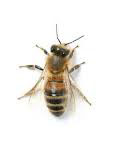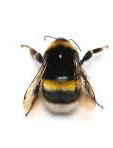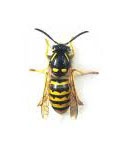

Believe it or not honey can last forever, if properly stored. Honey is an acid supersaturated solution containing hydrogen peroxide. Honey has been found in Egyptian tombs perfectly edible. Smithsonian.com has a wonderful article on the subject, which is available at: https://www.smithsonianmag.com/science-nature/the-science-behind-honeys-eternal-shelf-life-1218690/
All honey will granulate (crystallize) because it contains more than 70% sugars compared to less than 20% water making it unstable. Honey naturally granulates but is perfectly good. When honey does granulate just warm up a pan of water and place container of honey in pan. Honey will become liquid without overheating. The Summer’s Gold Honey Company does not recommend putting honey into the microwave. Honey caramelized at 71°C (160°F). It will also cause 3rd degree skin burns if boiled. My cousin placed a measuring cup of honey in microwave. When she was removing it from the microwave the measuring cup broke and she received a 3rd degree burn.
Honey should not be heated rapidly, over direct heat. Basically, the hotter you heat it, the more potential for reducing nutritional value. Excessive heat can have detrimental effects on the nutritional value of honey. Heating up to 37°C (98.6 F) causes loss of nearly 200 components, part of which are antibacterial. Heating up to 40°C (104 F) destroys invertase, an important enzyme. Heating up to 50°C (122 F) for more than 48 hrs. turns the honey into caramel (the most valuable honey sugars become analogous to sugar). Heating honey higher than 140 degrees F for more than 2 hours will cause rapid degradation. Heating honey higher than 160 for any time period will cause rapid degradation and caramelization. Generally any larger temperature fluctuation (10°C is ideal for preservation of ripe honey) causes decay. -John Skinner, University of Tennessee
Organic honey must come from a certified organic beekeeper in Canada, certified under the Canadian Organic Standards. There are only a few certified organic beekeepers in Canada, and only two in Ontario. Organic honeybees need to forage on organic or wild vegetation. Therefore, an organic beekeeper is required to maintain a forage area that provides a 3 km radius (or 28 sq. km) around the hive free of GE crops prohibited substances agricultural pesticides, herbicides, systemic seed treatments and sewage sludge. There cannot be: high-density housing areas, such as subdivisions; golf courses; garbage dumps or landfill sites; industrial complexes; very busy roads; or commercial non-organic greenhouses/nurseries, within 3 km of an organic bee yard. Organic beekeepers have a variety of other regulations they follow. If interested (https://www.cog.ca/standard-guide/7-specific-production-requirements/7-1-apiculture/) is the website for Canadian Organic growers
Creamed honey, also known as whipped or spun honey, is pure natural honey. Creamed honey is made by blending finely granulated honey (or crystallized honey) called “seed” and liquid honey. The honey becomes creamier as the granulated honey is mixed with liquid honey. The honey is stored between 7°C -18°C or 45°F -65°F for about two weeks. After two weeks you have a solid creamy spread that is great on toast. Creamed honey is great with fruits. Children love apple slices with creamed honey. You can also use cream honey any where you used liquid honey.
There is nothing more raw than Comb Honey. It is left just the way the bees made it. All we do at Summer’s Gold Honey Company is cut the comb honey into rectangles and package it for you. This means that all the pollen, propolis, enzymes and antimicrobial elements are still in the honey. Bees seal the honey into the Comb with wax as soon as it is ripened, sealing in the natural aroma. Beeswax is perfectly safe to eat. It can be chewed like gum when eaten by itself. Comb honey has a rich texture that lends itself to be paired with a variety of foods. Comb honey is delicious paired with cheese, on yogurt or oatmeal, in a sandwich or salad and on pizza.
Looking for a sweet and nutty taste pair Comb Honey with Parmigiano-Reggiano, Old Cheddar, Comté, Gruyère, or Appenzeller cheese. Ricotta and Feta paired with Comb Honey is a lovely sweet and creamy combination. More into sweet and spicy pair Comb Honey with Roquefort. Use your imagination to try different combination.
Homemade pizza with Feta, Arugula or Spinach and Comb Honey is simply delicious!
Spread Comb Honey on to different types of bread, scones, bagels, baguettes, or biscuits. Experiment with different meats and cheese. Little ones will love trying a grilled peanut butter and Comb Honey sandwich.
Honey can be considered as "raw" when it has not undergone any treatment or process such as heating or filtering. Honey is placed in a tank and the impurities are allowed to raise to the top or fall to the bottom of the tank. The Raw honey is than taken out through a tap in the middle of the tank.
To avoid being misleading, specific information which clarifies the meaning of the term "raw" may accompany the claim, such as "unfiltered".
Summer’s Gold Honey Company's Raw honey has not been heated or filtered. We took it straight from hives in Chatham-Kent. We left it in a large tank so that the impurities were allowed to rise to the top of the tank or sink to the bottom. Then we bottled it. This means it still has all of the beneficial enzymes with which the bees infused it and all of the pollen from the local area. Honey as nature intended it to be consumed.
Cold Pressed Honey is a form of Raw Honey. Here at the Summer's Gold Honey Company, we assure that each piece of our Comb Honey is at least 250-grams. If the comb honey isn't built out enough or the piece is too small we put it through a cold press. The press extracts the honey from the wax without any heat. Leaving behind a raw honey full of all the good. It is aromatic honey with all the enzymes, prebiotics, vitamins and minerals intact.
Unpasteurized Honey has not been processed through a heat exchanger, thus remaining in its natural state full of living enzymes, nutrients, vitamins, natural yeasts, enzymes and traces of pollen from flowers and trees
Summer’s Gold Honey Company does not currently pasteurize its honey.
Pasteurization is a process where certain foods are quickly heated for a short time to kill bacteria that can cause illness. There is no requirement in Canada for honey to be pasteurized. Honey is one of the safest foods you can eat. Harmful bacteria cannot live in honey because of its low moisture and high acidity. Yeast can live in honey but cannot reproduce if moisture levels are under 18%. (Normally Honey moisture is 17.8% in order to be graded as Canada No. 1, unless pasteurized then 18.6%.) All honey contains osmophilic yeasts. Osmophilic yeasts can cause fermentation. Pasteurizing honey kills any yeast that may be in the honey. It also delays the natural process of granulation in honey. In order to pasteurize honey, it must be heated to 71ºC (160ºF) and cool quickly using a tube heat exchanger or plate heat exchanger in order to prevent scorching.
Summer’s Gold Honey Company does not currently pasteurize its honey.
According to the Mayo Clinic - (https://connect.mayoclinic.org/page/transplant/newsfeed/unpasteurized-foods-and-raw-honey/)
“Pasteurization” of honey actually has no technical meaning, and heating honey doesn’t provide any food safety advantage. Producers may heat honey to keep it from crystalizing but there is nothing safer about honey calling itself “pasteurized” honey versus “raw” honey.
Therefore, you will not find any research or government advice indicating the need for immune compromised patients to use "pasteurized" honey. Foodborne pathogens actually do not survive in honey, so there is no additional risk in consuming it raw. Yeast can survive and grow in honey, but this fermentation will turn honey into mead, and a consumer would know this easily with visual inspection. Remember that infants under one year of age should never consume honey.
Propolis also known as bee glue is red or brown and used by bees to fill in gaps of 6 mm or less within the beehive. Propolis is made by bees mixing saliva, beeswax and different plant resins. Ancient Greeks, Romans and Egyptians used propolis as a medicine. There have been 180 compounds identified in propolis. It is used in the treatments for a multitude of problems and diseases. Propolis has antibacterial, antiseptic, anti-inflammatory, antifungal, anesthetic, and healing properties.
When I see a swarm, I think of Alfred Hitchcock. A swarm is thousands to tens of thousands of bees clustered around the queen while either flying or stationary. Swarming is a natural way to expand colonies and normally occurs in the spring. The queen honeybee produces the ‘queen pheromone’ which encourages the worker bees to build the comb, forage, and tend the brood. If the hive has too many bees some of the worker bees will not have access to the queen or her queen pheromone signals. These bees will create a new queen. Since there is only one queen in each hive, the old queen leaves before the new queen emerges, taking part of he colony with her. The queen bee is not a strong flyer and will stop to rest on a branch, fence or whatever and send out scout bees to find a suitable new home. Swarming bees do not have a hive to protect so they should not sting. If you are within one hour of Merlin, Ontario call 226-627-6262. If not call a local beekeeper and inform them where the swarm was seen.
Hornets, Paper Wasps and Yellowjackets are all wasps. Wasps can sting more than once. Wasps are beneficial pollinators. The developing larvae eat other insects and wasps are food for small mammals, birds, and spiders. Do not move suddenly if a wasp or bee lands on you, remain calm and wait for it to fly off, or brush it off gently.
Stings can be soothed with ice packs or with a baking soda paste. A wasp's venom is very potent. People with allergic reactions may require medical attention. If the effects of a sting are severe, you should see a doctor right away. There are effective anti-venom shots can that can reduce the number of severe reactions in people.

Honeybee

Bumblebee

Wasp
Honeybees have little hair on their thin bodies. Which are black and golden or amber strips. When honeybees are flying you cannot see their legs. Honeybees only sting to protect their hive. They die once they sting. They eat pollen and nectar.
Bumblebees are big round fuzzy and striped black and yellow or orange. Their legs hang down when flying. Bumblebees are passive and only sting when provoked. They can sting multiple times. They eat pollen and nectar.
Wasps have thin striped yellow and black bodies with no hair. Wasps legs hang down when flying. Wasp are aggressive and will sting without cause. They can sting multiple times. Wasp eat human food. They will bother people at picnics. Clean up any uneaten food so not to attract wasps.
No, not babies under one year of age. Their gastrointestinal tract is not fully developed. Honey and other non-pasteurized foods may contain Clostridium botulinum spores. People over a year old have developed a resistance to Clostridium botulinum. Honey is safe for pregnant and nursing moms, because the mother is immune.
Clostridium botulinum are found just about anywhere. According to the USDA, Clostridium botulinum is prevalent in soil and marine sediments worldwide, most commonly as spores. These spores are found everywhere. While the spores are generally harmless, the danger can occur once the spores begin to grow out into active bacteria and produce neurotoxins. A neurotoxin is a poisonous chemical that affects the central nervous system. It can destroy, paralyze, or adversely affect nerves or nerve tissue.
Health Canada
Since the first reported case in 1979, there have been 42 reported cases of infant botulism in Canada. Three of these cases have been linked to the consumption of honey.
Contact your doctor immediately if your baby shows signs of any of the following symptoms of infant botulism:
• is constipated
• has weak muscles
• is too weak to cry or suck as usual
• has a wobbly head because the neck is weak
• lacks facial expression
• has weak arms and legs
• has trouble breathing
• is not able to swallow
Infant Botulism
Infant botulism is caused by consuming the spores of the botulinum bacteria, which then grow in the infant's intestine and release toxin. In adults, the spores ingested from food are digested before they can form a toxin. However, the intestine of an infant under one year of age is sometimes not mature enough to digest these spores. In rare cases the botulism spores can germinate in the infant's intestine and produce a toxin which can make the baby sick. For this reason, it is recommended that infants under one year of age are not fed honey. Pasteurization of honey is not sufficient to kill the botulism spores. (Canadian Honey Council)
